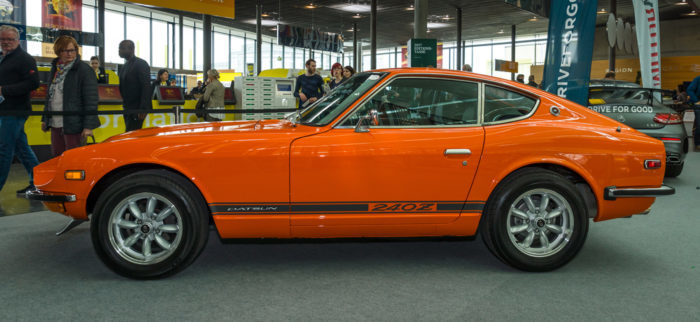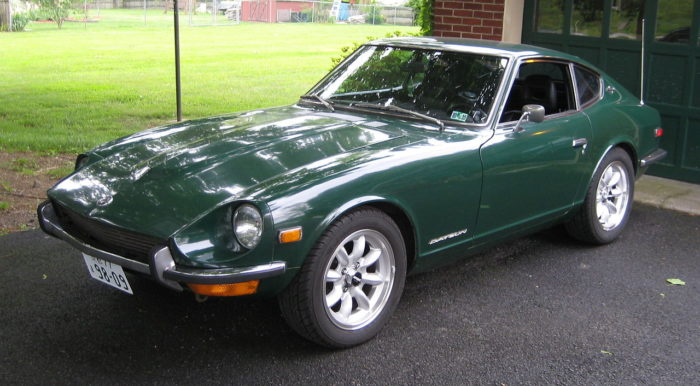
Source: Shutterstock
Upon its launch, the 1970 Datsun 240Z quickly proved to be a fierce competitor, even against the very best sports cars the American and European markets had to offer. It was, above all else, a performance car—but that didn’t mean it was short on sex appeal, either.
At a mere $3,500, the price sealed the deal, making this car a force to be reckoned with in the foreign markets. It’s hardly surprising that Nissan sold more than 30,000 units of the 240Z in 1971 alone. (It would go on to sell more than 50,000 units in 1972 and 40,000 in 1973.)
The affordable price tag was no small factor in its success. But something else set this car apart, and that’s just how much thought went into it. When it was first revealed in 1970, this little sports car was nothing short of brilliant.
The folks at Datsun balked at the thought of calling it a sports car at all. To them, it was a “personal” GT car. Whatever they wanted to call it, they knew they had a market for it. At the time, there was no shortage of open-minded would-be American sports car drivers who were saving up their money for something else—an MGB or an Opel or a Porsche—that is, until the 240Z came along and swept them off their feet.
The thing is, maybe the people at Datsun were right to balk at the idea of calling it a sports car. The Z-car, as it’s lovingly referred to, is in a class of its own. Other sports cars seem superficial, even comically absurd where this car is concerned. Though Datsun wasn’t an innovator by any means—they didn’t invent the disc brakes, overhead cam engine, or independent suspension system—they knew how to put everything together into a sophisticated product.
Powered by a 2.4-liter SOHC Inline-6 engine with dual SU carburetors, the American version of the 240Z offered 151 hp at 5,600 rpm. It came with a four-speed manual transmission, a disc braking system, and rear drums.

Source: Wikimedia Commons
The exterior styling is rumored to have been inspired by the Jaguar E-type’s front-end and the proportions of the Ferrari GTO. Datsun added its own touch with a dainty bumper and recessed headlights mounted on the front fenders.
The Z-car could handle a quarter mile in 15.5 seconds flat, accelerating from 0 to 60 mph in just over 8 seconds. With a top speed of 125 mph, it wasn’t breaking any records. But that didn’t matter then, and it certainly doesn’t matter now.
The only thing that gets in the way of the pleasure of driving this car is the diaphragm manufacturers installed to tackle the emission problem. When you lift your foot off the gas pedal, the diaphragm stops the throttle from closing for a precious few seconds, maintaining the engine speed. Unfortunately, this makes smooth upshifting near impossible, which for some drivers, might just be a dealbreaker.
But on the whole, the Z-car takes care of its driver. Steering requires only a moderate effort and the driver’s seat is well-positioned. The braking system does its job, though you’ll need to go heavy on the pedal to make an emergency stop.
If you’re a fan, you’ll need to spend between $10,000 and $20,000 for a Z-car in good condition.
